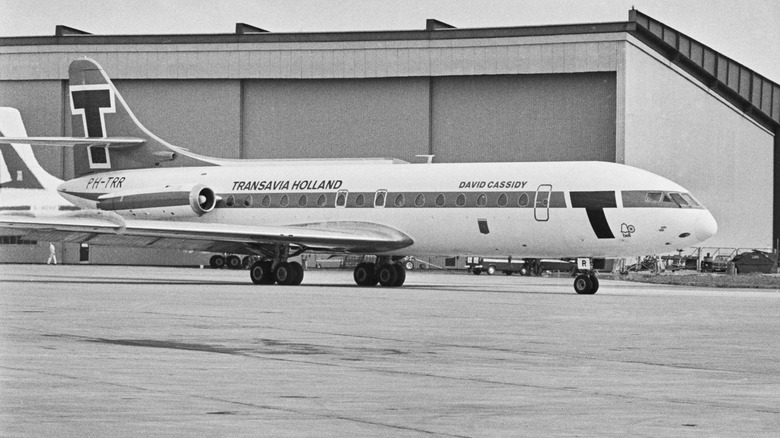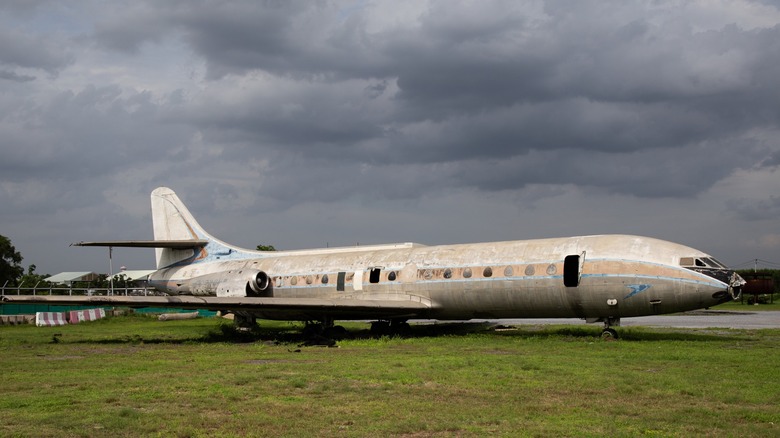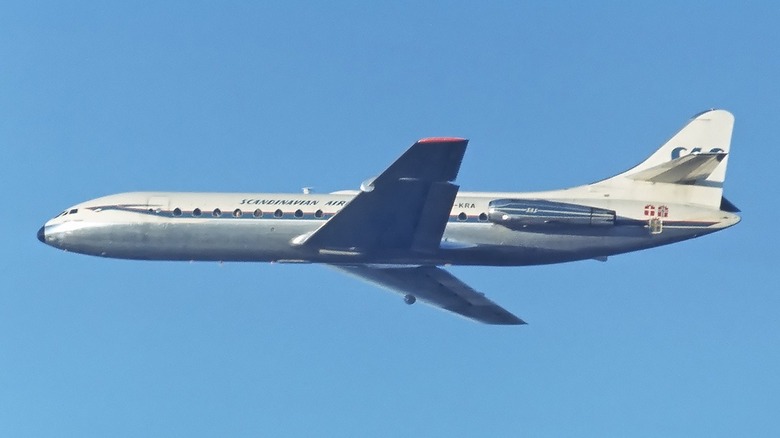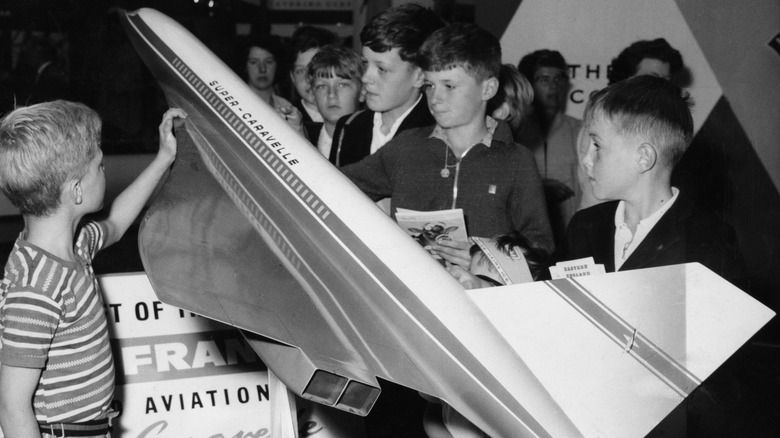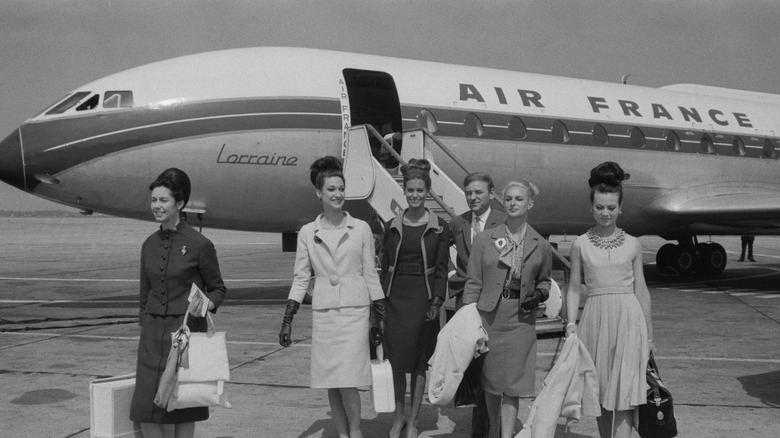Everything To Know About The Sud Aviation Caravelle
Air travel is, without a doubt, something we take for granted in this day and age. What once was attainable only for the wealthy — an occasion you wore a suit for — is now day-to-day transport. Looking back through the history of commercial aviation, there are a handful of aircraft that get credited as trendsetters or groundbreaking leaps forward in design and technology. The DC-9 and, of course, the Boeing 747, one of the best jets in the sky, are great examples. However, there is one aircraft that often flies under the radar — no pun intended.
The Sud Aviation SE-210 Caravelle is a French airliner that helped make major advancements in the world of jet-powered aviation. Hailing from the 1950s, the Caravelle was developed to connect France to North Africa more easily and more frequently. The French Secretariat General of Commercial and Civil Aviation wanted a plane that was capable of distances close to 1,200 miles to fulfill the North African connection, and the engineers delivered. This is the story of the criminally underrated Sud Aviation SE-210 Caravelle.
History of the Sud Aviation SE-210 Caravelle
The development of the Caravelle began when the French Government ordered four prototype aircraft to be built in 1953: two static models and two flying. On May 27th, 1955, the Caravelle left the ground for the very first time.
Between those two events, of course, came quite a bit of development and engineering. The Caravelle aircraft were partially built in Marignane — a commune in France that's now known as a major headquarters for Airbus. This regional construction included the nose sections and all associated systems, such as flight and engine controls. Production of the engines themselves and other components for the aircraft took place in Toulouse, where the Marignane contributions were transported after construction.
By 1957, nearly 300 workers were part of the Caravelle project, making the rollout of this pioneering jet aircraft rather quick for the time. The first delivery-ready production unit was finished in 1958, and in April 1959, the first Sud Aviation SE-210 Caravelle entered commercial service.
The Caravelle in service
The first company to adopt the Caravelle and take to the commercial skies was Scandinavian Airlines System (SAS), now known as Scandinavian Airlines. However, Air France had the most Caravelles in service.
In 1959, Air France launched a fleet of nine Caravelles into service. Air France is also the origin of the name "Caravelle," which references Christopher Columbus' ships. The first Air France flight with a Caravelle departed Orly on May 6th, 1959 and flew to Istanbul via Rome and Athens. More units were integrated into the airline's fleet in the coming years, with the grand total of Caravelles in the Air France fleet reaching 54.
In total, Sud Aviation built 282 Carvelles from 1958 to 1972. Eventually, more efficient aircraft like the Boeing 727 and 737 emerged, and airlines, including Air France, opted to retire the Caravelle fleet in favor of these shiny new options. Airliners.net reports that eight Caravelles remained in service until 2002. During its relatively short run, the Caravelle made an important mark on the history of commercial jet aviation.
[Featured image by Lars Söderström via Wikimedia Commons | Cropped and scaled | CC BY-SA 3.0]
Caravelle influence on aviation
The twin rear-engine layout of the Caravelle was the first example of rear-mounted jet engines in commercial aviation. Similar designs wound up gracing planes like the Boeing 727, the McDonnell-Douglas MD-80, and the Tupolev Tu-134 Jet. However, the Caravelle also played a role in the development of one of the most iconic airliners in history: the Concorde.
In the early 1960s, Sud Aviation began developing the Super Caravelle. It was an early design with the intention of becoming the first supersonic commercial airliner. Sud Aviation went on to merge with Nord Aviation and British Aerospace to become Aerospatiale, the company that created the Concorde. More mergers and changes eventually led to the creation of Airbus.
While it wasn't a lasting success thanks to its extremely expensive operation and the tragic crash that ultimately killed the Concorde, it was a monumental moment in commercial aviation. Without Sud Aviation developing the Caravelle, it may never have happened in the first place.
Specs and variations
The Caravelle had a few different variations over the course of its run. Most variants seated up to 80 passengers, though that number grew with the later models, maxing out at 140 passengers for the final model, the Caravelle 12.
All variants of the Caravelle had a 112-foot and six-inch wingspan, though the lengths and heights of the aircraft varied a bit between models. Caravelle 12 models were a little bit over 118 feet long, making them the longest of the bunch. The Caravelle 10 and 11 were 10 feet shorter, and all other variants were 105 feet in length. Max takeoff weight was up to 123,460 pounds, and the max cruising speed was around 512 miles per hour.
Finally, the last few Caravelle models used two Pratt & Whitney JT8D-9 turbofan jet engines, while the earlier models used Rolls-Royce RA.29 Avon turbojet engines.
